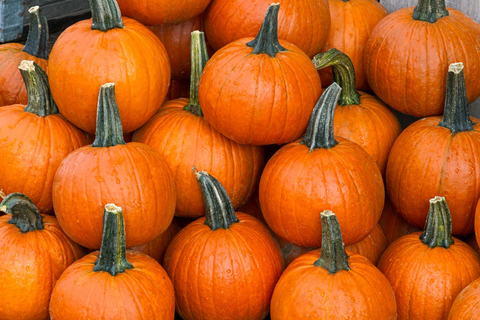Top 10 Reasons to Choose Autumn for Planting Your Garden
Fall garden chores often involve preparing your garden for winter and raking leaves.
However, if you focus solely on leaf removal, you'll miss out on a perfect planting opportunity. The cool temperatures, along with other benefits, make autumn an ideal time to add new plants to your landscape, divide overgrown perennials, and even plant for a late-season vegetable harvest in some regions.
Plus, all those fallen leaves make excellent cover for all the new trees, shrubs, perennials, and bulbs you plant. Plant this fall with these 10 compelling reasons to view the season in a new light, swap the rake for the shovel, and start digging.
- Mild Weather

Warm, non-sweltering days combined with cool nights make for the perfect setting for establishing new plants. Spring can suddenly turn hot and dry, often spelling trouble for fragile new arrivals. In contrast, fall weather is usually more stable, leaning towards the cool and rainy side.
- Reduced Pests
From hungry insects to plant diseases, fall is typically a quieter time on the pest front. Many common garden pests complete their above-ground life cycles by late summer, reducing the issues for fall planting.
- Less Chores, More Time
Yes, there are leaves to rake, and container gardens to empty for winter. But unlike spring, which often comes with a mile-long to-do list (think lawn care, potting up, sowing, soil prep, and more), fall's chore list is usually much shorter as plants gradually wind down for winter. With more time on your hands, fall planting, transplanting, and caring for new plants become much easier.
Having more time on your hands also improves survival rates. You're more likely to remember to water new-planted perennials or shrubs in the fall compared to the spring when you're juggling watering newly potted plants, vegetables, and annual flowerbeds all at once.

- Deals on New Plants
Garden centers and box stores often discount plants as the growing season comes to a close. Big discounts mean you can buy twice the number of plants in the fall for the same dollar amount you'd spend in spring.
- Growing Season
Fall planting offers weeks of growth time for perennials, trees, and shrubs before plants enter dormancy for winter. While the above-ground stems and branches stop growing, remember that the root system continues to expand. Roots can grow in soil temperatures as low as 45°F. Adequate water is crucial for continuous growth; water plants every few weeks until the ground freezes. Trees, shrubs, and perennials planted in the fall typically mature during the following year's summer heat.
- Spend More Time in Spring Gardens
The more tasks you complete in your spring garden in the fall, the more time you'll have to spend in the garden next spring. Some perennials divided in the fall, along with newly planted shrubs or trees, will free you up for other projects come next spring.
- Pre-Spring Color
Tulips, daffodils, crocuses, and a variety of spring-flowering bulbs need to be planted before the ground freezes in the fall. Plan for weeks of colorful bouquets in early, mid, and late spring by planting bulbs that bloom in each period. Plant bulbs immediately once the soil starts to cool, usually in late September.
- Extended Harvest

Cool-season crops thrive in the crisp days of fall and even through winter in some areas. Broccoli, cauliflower, carrots, peas, radishes, turnips, spinach, and lettuce all do well in the fall. Plant these crops in early September in cooler regions and provide frost protection as temperatures drop.
- Easy Seed Starting
Warm soil temperatures coupled with ample moisture in the fall expedite seed germination. This is why fall is the best time to sow new lawns, fill in bare patches on existing lawns, or even seed lawns altogether.
- Better Recovery for Perennials
Most perennials are easy to divide and replant in the fall. The soil temperature and weather of autumn encourage robust root growth as plants establish themselves in their new locations. Deeply water perennials after transplanting and every few weeks to ensure success until the ground freezes. Top-dress transplants with a 6-inch layer of leaves for added winter protection.
